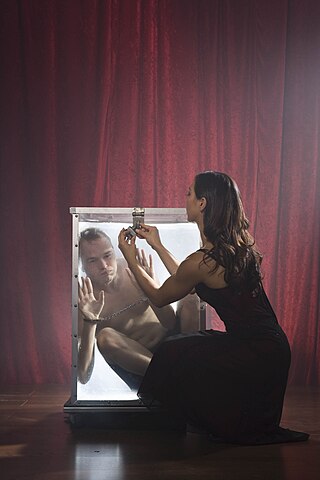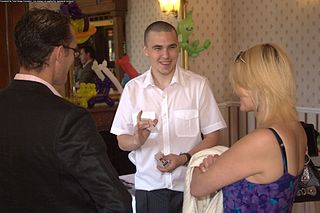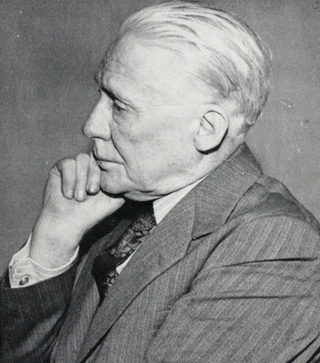Sleight of hand refers to fine motor skills when used by performing artists in different art forms to entertain or manipulate. It is closely associated with close-up magic, card magic, card flourishing and stealing. Because of its heavy use and practice by magicians, sleight of hand is often confused as a branch of magic; however, it is a separate genre of entertainment and many artists practice sleight of hand as an independent skill. Sleight of hand pioneers with worldwide acclaim include Dan and Dave, Ricky Jay, Derek DelGaudio, David Copperfield, Yann Frisch, Norbert Ferré, Dai Vernon, Cardini, Tony Slydini, Helder Guimarães and Tom Mullica.

Card manipulation is the branch of magic that deals with creating effects using sleight of hand techniques involving playing cards. Card manipulation is often used in magical performances, especially in close-up, parlor, and street magic. Some of the most recognized names in this field include Dai Vernon, Tony Slydini, Ed Marlo, S.W. Erdnase, Richard Turner, John Scarne, and Ricky Jay. Before becoming world-famous for his escapes, Houdini billed himself as "The King of Cards". Among the more well-known card tricks relying on card manipulation are Ambitious Card, and Three-card Monte, a common street hustle also known as Find the Lady.

Coin magic is the manipulating of coins to entertain audiences. Because coins are small, most coin tricks are considered close-up magic or table magic, as the audience must be close to the performer to see the effects. Though stage conjurers generally do not use coin effects, coin magic is sometimes performed onstage using large coins. In a different type of performance setting, a close-up coin magician will use a large video projector so the audience can see the magic on a big screen. Coin magic is generally considered harder to master than other close-up techniques such as card magic, as it requires great skill and grace to perform convincingly, and this requires much practice to acquire.
A trick deck is a deck of playing cards that has been altered in some way to allow magicians to perform certain card tricks where sleight of hand would be too difficult or impractical.
The Ambitious Card, or Elevator Card, is a magic effect in which a playing card seems to return to the top of the deck after being placed elsewhere in the middle of the deck. This is a classic effect in card magic and serves as a study subject for students of magic. Most performing card magicians will have developed their own personal Ambitious Card routine.

David Frederick Wingfield Verner, better known by his stage names Dai Vernon or The Professor, was a Canadian magician.

Tony Slydini, simply known as Slydini, was a world-renowned magician. His mastery, expertise, originality and innovative approach to close-up artistry magic, earned him a legendary reputation in the magic world. He traveled the world performing for the public as well as performing and lecturing fellow magicians. As a result, he served as an inspiration to generations of well-known magicians, celebrities and entertainers, including Doug Henning, Dick Cavett, Bill Bixby, Ricky Jay, David Copperfield and countless others. Although he was best known as a master of close-up artistry, he continually demonstrated an extraordinary performing ability and during his lifetime was responsible for a long series of books, films and publications highlighting his mastery of the magical crafts. For his work, he received the highest honors that his profession could bestow, including both the coveted Masters Fellowship Award and Performing Fellowship Award from the Academy of Magical Arts. During his lifetime, Tony Slydini was inducted into the Society of American Magicians Hall of Fame as a Living Legend.

A predicament escape is any form of magic trick or escapology stunt in which the performer is trapped in an apparently dangerous situation and is required to escape from it. Classic examples include the Table of Death, Houdini's Chinese Water Torture Cell, Princess Tenko's escape from an exploding boat and the Upside Down Suspended Straitjacket escape, in which a performer is suspended high in the air from a burning rope.
This is a glossary of conjuring terms used by magicians.
Spelling Bee may refer to one of several card tricks that revolve around the spelling of card types, audience member names, or words suggested by the audience. Many make use of decks prepared in advance in order to provide the illusion of spelling card names in a particular sequence. Jean Hugard's Encyclopedia of Card Tricks lists a number of such spelling-based tricks, many of which are considered to be self-working.
The bill in lemon is an effect in which a magician requests a currency note from a spectator and makes the note vanish, then proceeding to slice a lemon open to show the note inside. Variations include the coin in orange, and more generally "something in fruit".

Close-up magic is magic performed in an intimate setting usually no more than 3 meters from one's audience and is usually performed while sitting at a table.

The Tarbell Course in Magic is a notable encyclopedia of magic amongst professional and amateur magicians. It has eight volumes; the first five were part of the original home-study correspondence course compiled in 1928 by Harlan Tarbell, the remaining three volumes being added on later.

Chink-a-chink is a simple close-up magic coin trick in which a variety of small objects, usually four, appear to magically transport themselves from location to location when covered by the performer's hands, until the items end up gathered together in the same place. Variations, especially the Sympathetic Coins also known as Coins-n-Cards, have been performed since the 1800s. Popular modern variations are Shadow Coins and Matrix. A variation using playing cards as the objects is known as Sympathetic Aces.

Jean Hugard was an Australian professional magician.

Magic, which encompasses the subgenres of illusion, stage magic, and close up magic, among others, is a performing art in which audiences are entertained by tricks, effects, or illusions of seemingly impossible feats, using natural means. It is to be distinguished from paranormal magic which are effects claimed to be created through supernatural means. It is one of the oldest performing arts in the world.

The Vanishing Lady is an 1896 French short silent trick film directed by Georges Méliès. It features Méliès and Jehanne d'Alcy performing a trick in the manner of a stage illusion, in which D'Alcy disappears into thin air. A skeleton appears in her place before she finally returns for a curtain call.
Francis Carlyle was a professional magician who was a regular and popular performer at Hollywood's Magic Castle.

A levitation illusion is one in which a magician appears to defy gravity by making an object or person float in the air. The subject may appear to levitate unassisted, or it may be performed with the aid of another object in which case it is termed a "suspension".












